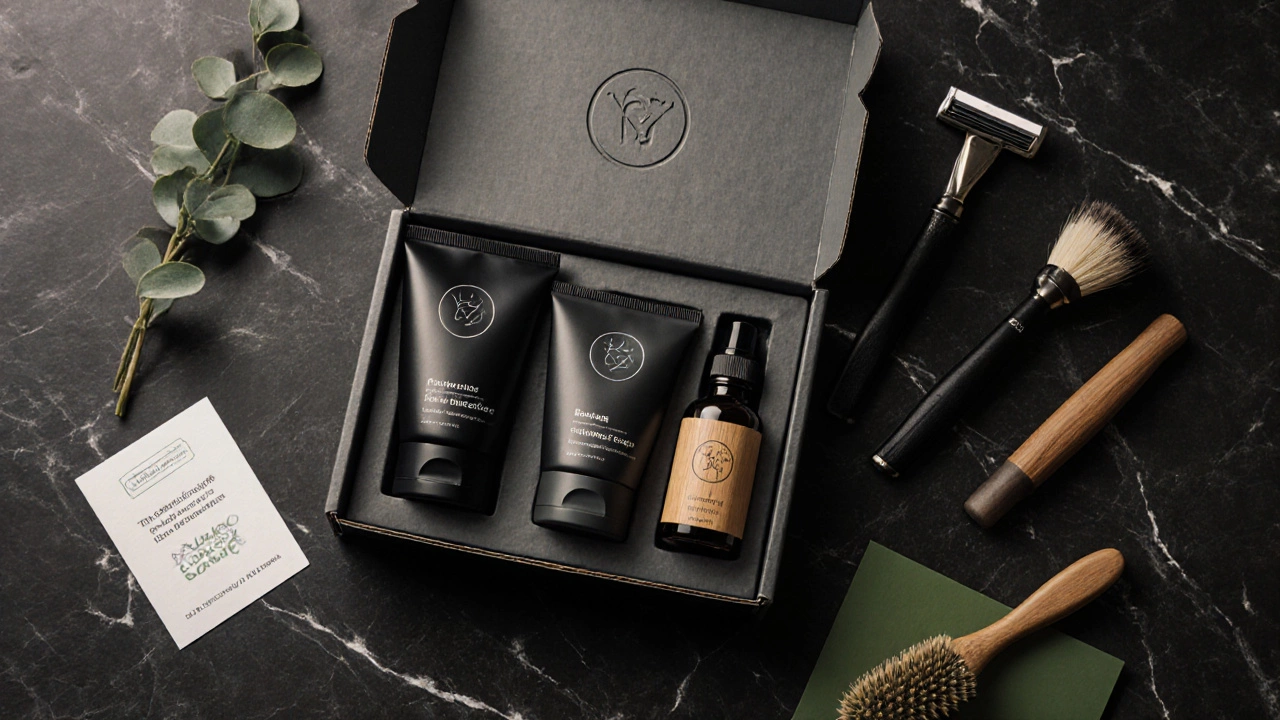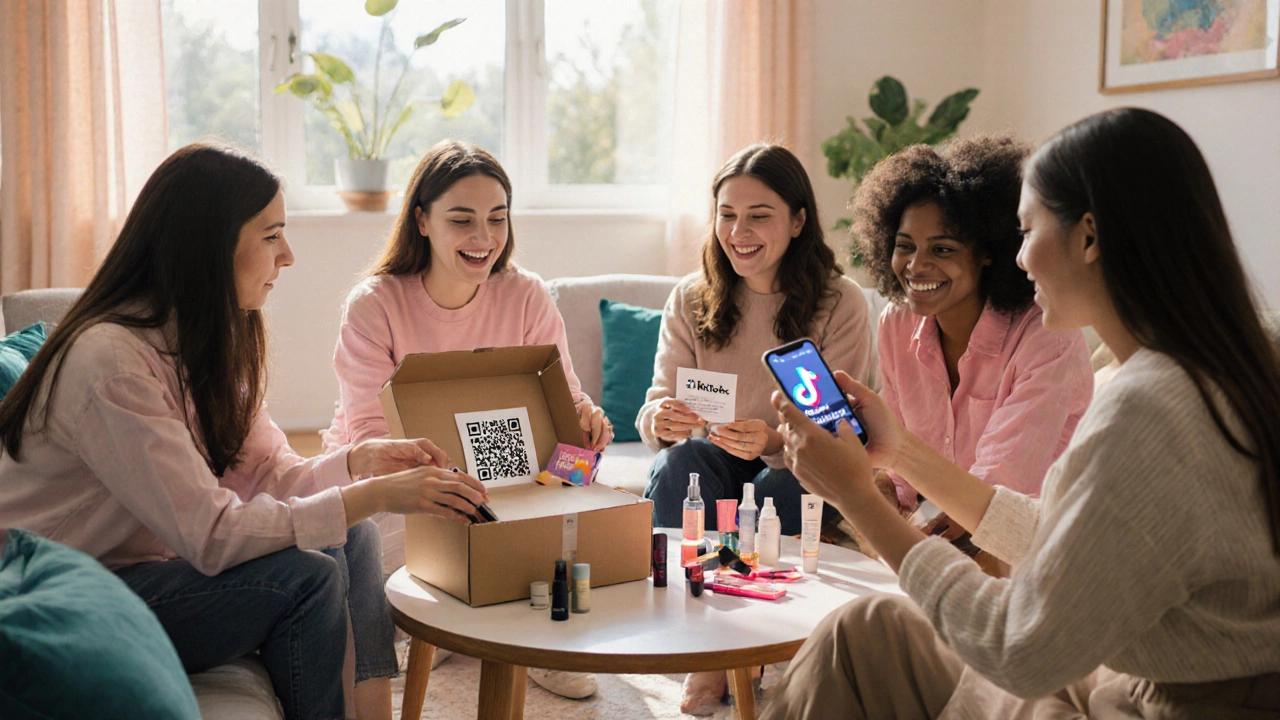Beauty Subscription Box Buyer Likelihood Calculator
How likely are you to subscribe?
Enter your demographic details to see your likelihood of subscribing to a beauty subscription box based on 2025 market data.
Key Takeaways
- Millennials (28‑38) and GenZ (18‑27) together account for roughly 68% of beauty box purchases.
- Women still dominate the market (≈78%), but male grooming boxes are growing fastest at 22% YoY.
- Disposable income above £45,000 and a preference for eco‑friendly products boost buying likelihood by 2‑3×.
- Urban dwellers in the UK, US and Germany lead the subscription churn, while suburban shoppers favor quarterly deliveries.
- Targeted social‑media ads, influencer collaborations and limited‑edition themes drive conversions across all segments.
When we talk about beauty subscription boxes are curated monthly deliveries of makeup, skincare or grooming products that aim to surprise and delight the consumer. The model has exploded since 2016, and by 2025 the global market is valued at $13.8billion, according to a report from Euromonitor. But who’s actually reaching for these monthly goodies? Below we break down the most active buyer groups, why they buy, and how brands can tailor their offers for each segment.
What the Numbers Say: The Big Picture
Subscription‑box data platforms such as Cratejoy and Subscription Box Insights publish quarterly reports on buyer profiles. The latest 2025 snapshot shows:
- Overall subscription growth: 19% YoY across all categories.
- Beauty‑specific growth: 23% YoY, outpacing fashion (14%) and food (12%).
- Average lifetime value (LTV) per subscriber: $210 in the US, £165 in the UK.
These figures tell us that beauty boxes are not a niche hobby; they’re a mainstream e‑commerce channel. To understand who fuels that growth, we need to dig into demographics.
Age Groups: Who’s Opening the Box?
Age remains the strongest predictor of subscription likelihood. Below is a quick glance at purchase propensity by cohort, based on a 2024 survey of 12,400 beauty‑box users in the US, UK, Germany and Canada.
| Age Range | Share of All Subscribers | Average Spend per Month | Retention Rate (6months) |
|---|---|---|---|
| 18‑27 (GenZ) | 38% | $19 | 58% |
| 28‑38 (Millennials) | 30% | $22 | 62% |
| 39‑49 (GenX) | 18% | $24 | 65% |
| 50+ (Boomers & Seniors) | 14% | $18 | 51% |
Two entities drive these numbers:
- GenZ individuals born roughly between 1997 and 2012 who are digital natives and value novelty.
- Millennials consumers aged 28‑38 who balance career growth with personal self‑care.
GenZ’s love for “unboxing” videos on TikTok translates into higher trial rates, while Millennials appreciate the convenience of regularly receiving premium products without the hassle of in‑store browsing.

Gender Landscape: Women Still Lead, Men Are Catching Up
Historically, beauty boxes were marketed almost exclusively to women. In 2025, women make up 78% of subscribers, but the male grooming segment has jumped from 7% in 2020 to 22% today.
Male grooming market a fast‑growing category that includes skincare, haircare and fragrance tailored for men is being fueled by three trends:
- Influencer‑led product demos on YouTube and Instagram Reels.
- Rising awareness of skin health among men in their 30s and 40s.
- Subscription services that bundle “all‑in‑one” kits, simplifying the buying decision.
Brands that add gender‑neutral or male‑focused lines see a 1.8× lift in average order value, according to data from Boxed Beauty (2024).
Income & Spending Power: Money Talks
Disposable income is the second‑largest driver after age. Consumers earning £45,000+ annually are three times more likely to stay subscribed for six months or longer.
Why does income matter?
- Higher earners view subscription boxes as a “treat” rather than a budget item, allowing them to splurge on premium or luxury brands.
- They are also more open to “curated” experiences, paying extra for personalization algorithms that match products to skin type and style.
Meanwhile, price‑sensitive shoppers (annual income under £25,000) gravitate toward “budget” boxes that focus on value‑for‑money samples rather than full‑size luxury items.
Geography & Lifestyle: Urban vs Suburban
Location influences frequency and box size. Urban consumers-especially those living in London, New York, Berlin and Toronto-prefer monthly deliveries with compact packaging that fits limited living space. Suburban shoppers, on the other hand, often opt for quarterly boxes that include larger sample sets.
E‑commerce platforms online marketplaces that enable subscription‑box brands to reach consumers via web and mobile apps such as Shopify, Cratejoy and Amazon Subscribe & Save, report that urban zip codes have a 27% higher conversion rate for monthly beauty boxes.
Motivations: Why Do People Subscribe?
Understanding the “why” behind the purchase helps marketers craft better messaging. The top motivations, ranked by survey respondents, are:
- Discovery of new products - 64% love the surprise factor.
- Convenient replenishment of staples - 48% appreciate not having to restock.
- Perceived value - 42% feel they get a better deal than buying individually.
- Community & social sharing - 35% enjoy posting unboxing videos.
- Eco‑friendly packaging - 22% choose boxes that use recyclable materials.
Two entities stand out here: Eco‑conscious shoppers consumers who prioritize sustainability in their purchasing decisions and Social media influencers content creators whose product recommendations can sway follower buying behavior. Brands that partner with micro‑influencers (10k‑100k followers) see a 12% lift in subscription sign‑ups.
How Brands Can Target Each Segment
Below is a quick action guide, matching each key demographic with the tactics that work best.
- GenZ: Leverage TikTok challenges, create limited‑edition collabs with pop‑culture icons, and use AR filters that let users “try on” makeup virtually.
- Millennials: Emphasize premium ingredients, offer flexible subscription plans (pause, skip a month), and highlight eco‑friendly packaging.
- Male Grooming: Feature clear‑skin routines, use straightforward language (“no‑fuss”, “all‑in‑one”), and showcase before‑after testimonials.
- High‑Income Earners: Include full‑size luxury products, provide personalized skin‑type quizzes, and offer exclusive member‑only events.
- Eco‑Conscious: Use recyclable boxes, partner with cruelty‑free brands, and disclose carbon‑offset metrics on each delivery.
Tracking the right metrics-conversion rate, churn, average revenue per user (ARPU)-lets you refine these strategies over time.
Common Pitfalls and How to Avoid Them
Even with solid demographic data, many brands stumble on execution.
- Lack of personalization: Sending the same product mix to everyone leads to higher churn. Use data‑driven quizzes to tailor each box.
- Inconsistent product quality: A single cheap item can tarnish the brand’s reputation. Keep a minimum threshold for brand partners.
- Poor communication: Subscribers need clear shipping updates and easy ways to pause or cancel. A responsive FAQ reduces support tickets by up to 30%.
Addressing these issues early improves long‑term loyalty, especially among the high‑value Millennial and GenX cohorts.
Frequently Asked Questions
Which age group is most likely to try a beauty subscription box?
GenZ (18‑27) leads with a 38% share of all subscribers, followed closely by Millennials (28‑38) at 30%.
Do men really buy beauty boxes?
Yes. The male grooming segment now represents 22% of the market, growing faster than any other demographic.
How important is income when deciding to subscribe?
Consumers with annual disposable income over £45,000 are three times more likely to stay subscribed for six months or longer.
What motivates people to keep their box?
Key drivers are product discovery (64%), convenience (48%), perceived value (42%), community sharing (35%) and sustainable packaging (22%).
How can I attract eco‑conscious shoppers?
Use recyclable boxes, partner with cruelty‑free brands, and highlight your carbon‑offset numbers on each shipment.

